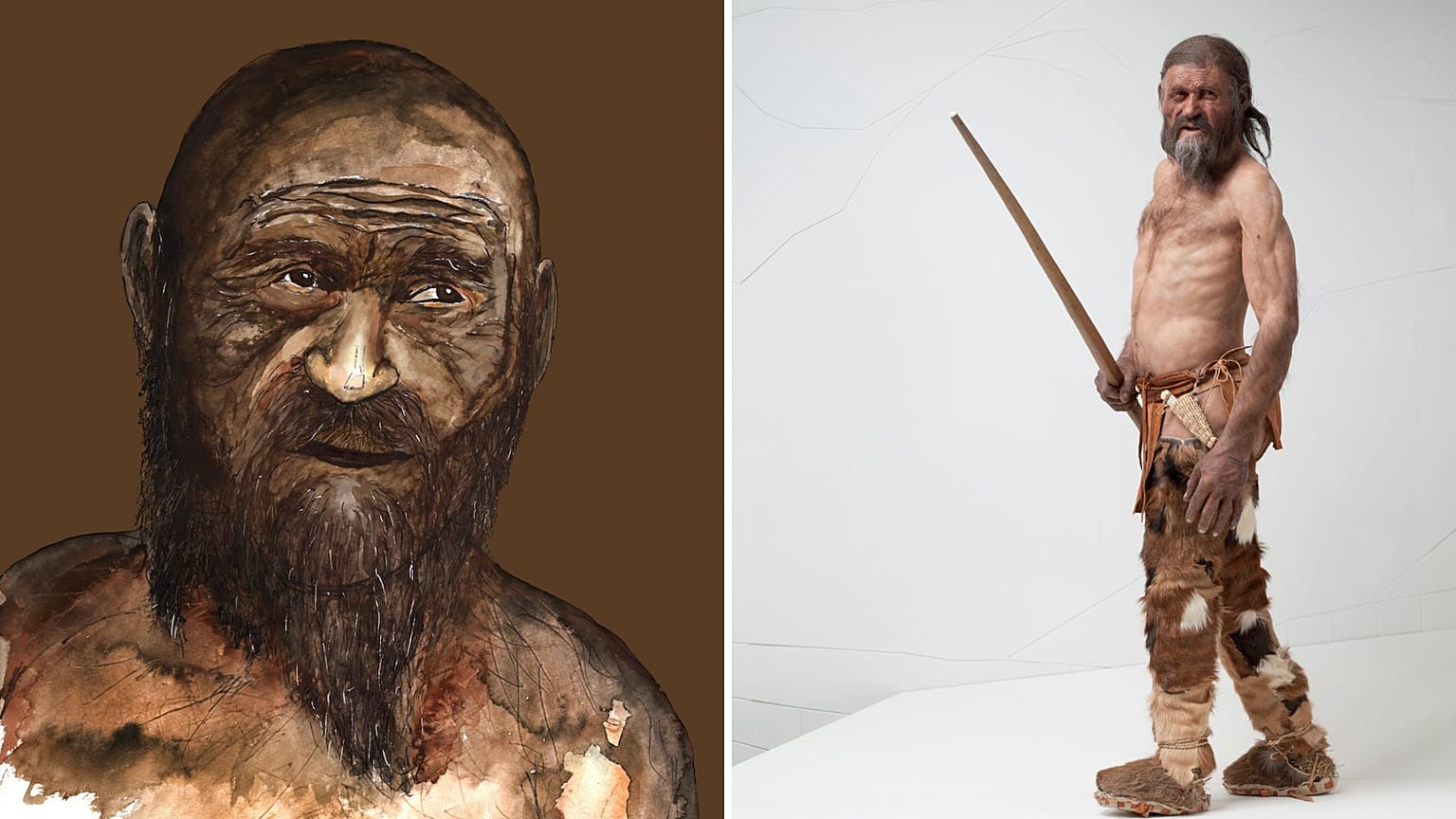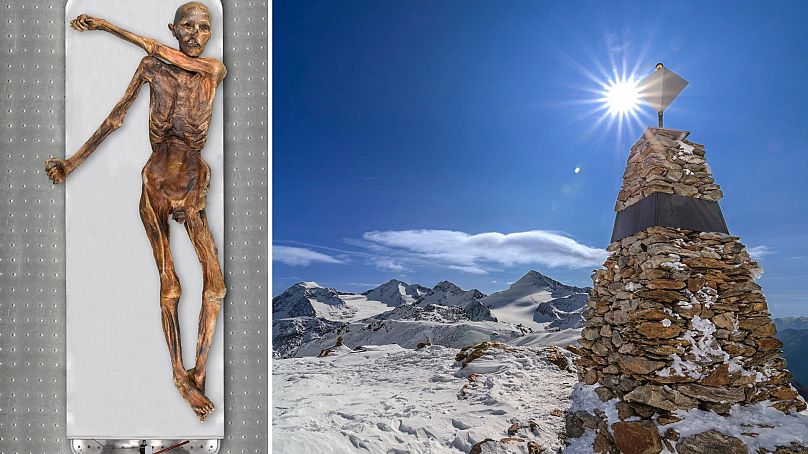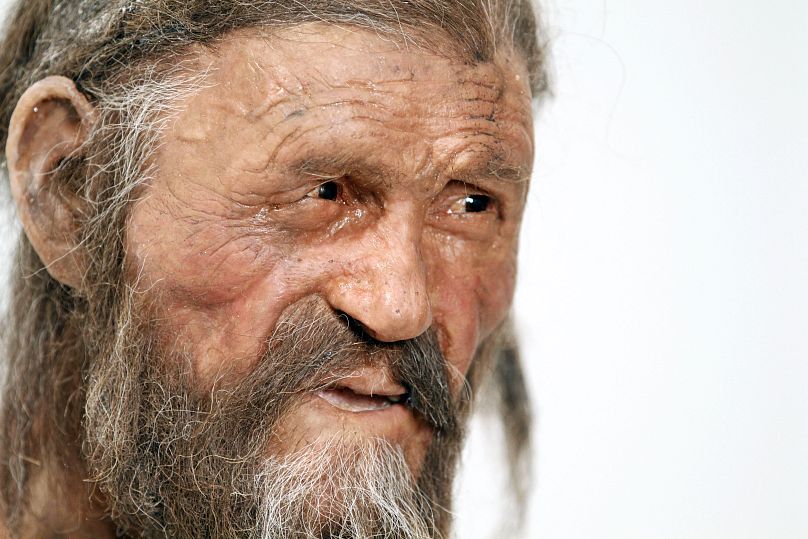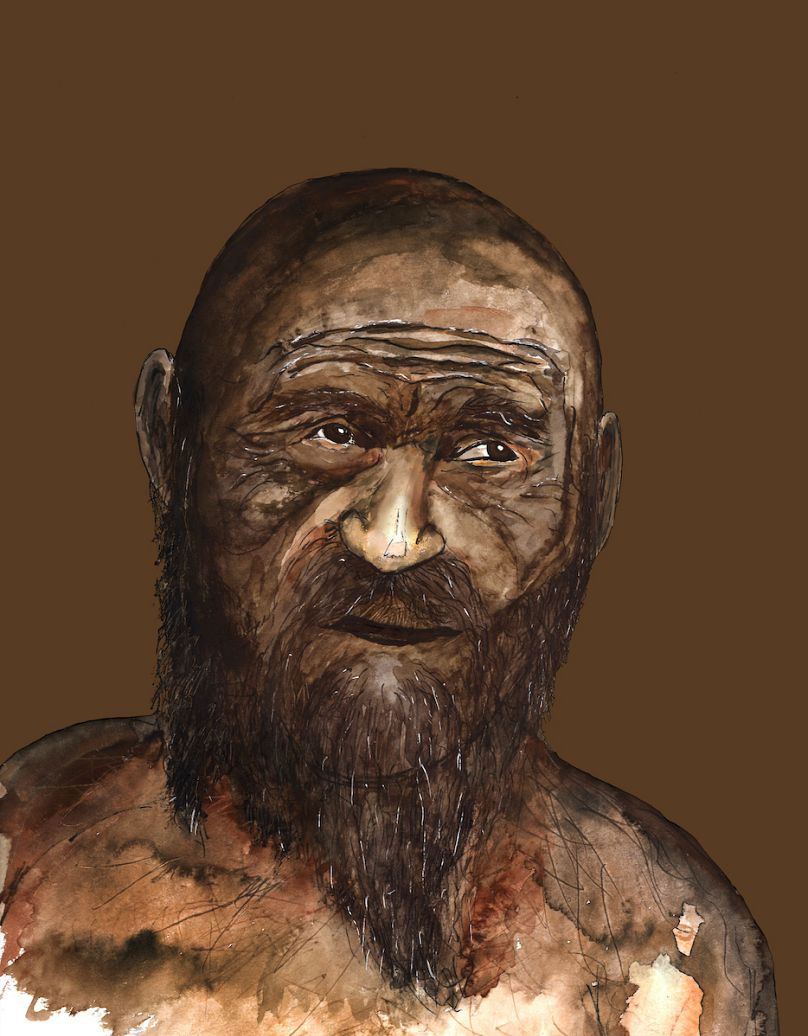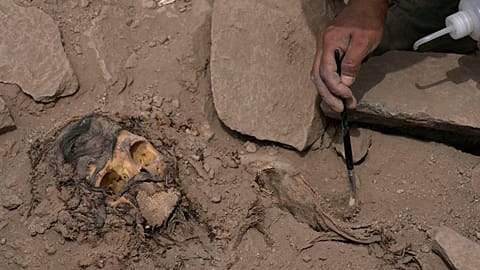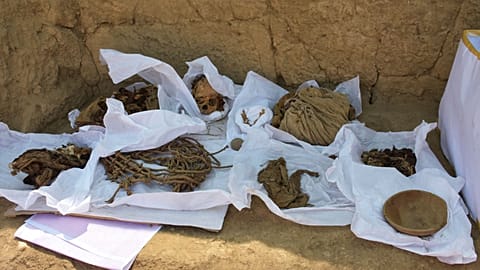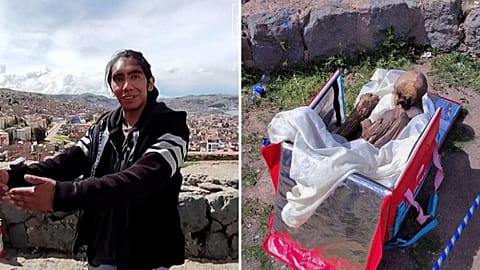New DNA analysis of Ötzi the Iceman, the oldest human mummy ever discovered in Europe, reveals fascinating new details on how he actually looked. Warning: Video above contains graphic images.
Decades after the discovery of Ötzi the Iceman, the famous glacier mummy who was discovered in the Italian Alps by hikers in 1991, scientists have dug back into his DNA to paint a more accurate picture of the ancient hunter.
A newly refined ancient genome extracted from Ötzi’s hip bone presents a fresh perspective on his actual appearance.
Contrary to conventional depictions of him with long, dishevelled hair and pale skin, the new analysis suggests that he likely had very little hair on his head, dark eyes, and much darker skin than previously thought.
The study also determines that Ötzi was mostly descended from farmers from present day Turkey.
Who was Ötzi the Iceman?
In September 1991, German hikers high up in the Ötztal Alps, an Italian valley near the border with Austria stumbled upon a shocking discovery: a frozen corpse trapped in the ice.
The remains belonged to a man who had died around 5,400 years earlier, a victim of an arrow attack to the back.
Alongside the body were discovered remnants of clothing and equipment, including a copper axe, a longbow, and a bearskin hat.
Nicknamed Ötzi, after the valley where he was found, the iceman's discovery captivated global imagination, providing unprecedented insights into ancient European civilisations and granting scientists unparalleled access to the past.
The enigma surrounding his violent demise, his identity, and the circumstances of his presence on a mountain pass has sparked intrigue extending well beyond the realm of archaeology.
Since 1998, the South Tyrol Museum of Archaeology in Bolzano, Italy, has housed his body in a special cold cell unit.
What is the significance of the new findings?
An earlier draft of Ötzi’s genome was published in 2012. But ancient DNA research has advanced since then, so scientists decided to take another look at the iceman’s genes, explained study author Johannes Krause, a geneticist at Germany’s Max Planck Institute for Evolutionary Anthropology.
The updated genome is “providing deeper insights into the history of this mummy,” said Andreas Keller of Germany’s Saarland University, who worked on the earlier version but was not involved with the latest study.
Based on the new genome, Ötzi's appearance when he died around age 45 was much like the mummy looks today.
"It's dark and doesn't have much hair on it," said study author Albert Zink, head of the Institute for Mummy Studies at Eurac Research in Italy.
Scientists previously thought the iceman was lighter-skinned and hairier in life, but that his mummified corpse had changed over time. His ancestry suggests that he lived among an isolated population in the Alps, Zink said.
Most Europeans today have a mix of genes from three groups: farmers from Anatolia, hunter-gatherers from the west, and herders from the east. But 92% of Ötzi ’s ancestry was from just the Anatolian farmers, without much mixing from the other groups.
Check out the video above to take a look at where Ötzi the Iceman is housed.















